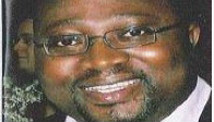NEW YORK (Reuters) - With earnings momentum on the rise, the S&P 500 seems to have few hurdles ahead as it continues to power higher, its all-time high a not-so-distant goal.
The U.S. equity benchmark closed the week at a fresh five-year high on strong housing and labor market data and a string of earnings that beat lowered expectations.
Sector indexes in transportation <.djt>, banks <.bkx> and housing <.hgx> this week hit historic or multiyear highs as well.
Michael Yoshikami, chief executive at Destination Wealth Management in Walnut Creek, California, said the key earnings to watch for next week will come from cyclical companies. United Technologies
"Those kind of numbers will tell you the trajectory the economy is taking," Yoshikami said.
Major technology companies also report next week, but the bar for the sector has been lowered even further.
Chipmakers like Advanced Micro Devices , which is due Tuesday, are expected to underperform as PC sales shrink. AMD shares fell more than 10 percent Friday after disappointing results from its larger competitor, Intel
Following a recent underperformance, an upside surprise from Apple on Wednesday could trigger a return to the stock from many investors who had abandoned ship.
Other major companies reporting next week include Google
CASH POURING IN, HOUSING DATA COULD HELP
Perhaps the strongest support for equities will come from the flow of cash from fixed income funds to stocks.
The recent piling into stock funds -- $11.3 billion in the past two weeks, the most since 2000 -- indicates a riskier approach to investing from retail investors looking for yield.
"From a yield perspective, a lot of stocks still yield a great deal of money and so it is very easy to see why money is pouring into the stock market," said Stephen Massocca, managing director at Wedbush Morgan in San Francisco.
"You are just not going to see people put a lot of money to work in a 10-year Treasury that yields 1.8 percent."
Housing stocks <.hgx>, already at a 5-1/2 year high, could get a further bump next week as investors eye data expected to support the market's perception that housing is the sluggish U.S. economy's bright spot.
Home resales are expected to have risen 0.6 percent in December, data is expected to show on Tuesday. Pending home sales contracts, which lead actual sales by a month or two, hit a 2-1/2 year high in November.
The new home sales report on Friday is expected to show a 2.1 percent increase.
The federal debt ceiling negotiations, a nagging worry for investors, seemed to be stuck on the back burner after House Republicans signaled they might support a short-term extension.
Equity markets, which tumbled in 2011 after the last round of talks pushed the United States close to a default, seem not to care much this time around.
The CBOE volatility index <.vix>, a gauge of market anxiety, closed Friday at its lowest since April 2007.
"I think the market is getting somewhat desensitized from political drama given, this seems to be happening over and over," said Destination Wealth Management's Yoshikami.
"It's something to keep in mind, but I don't think it's what you want to base your investing decisions on."
(Reporting by Rodrigo Campos, additional reporting by Chuck Mikolajczak and Caroline Valetkevitch; Editing by Kenneth Barry)

